Ultimate Things to Do in Jordan (Your Jordan Bucket List)
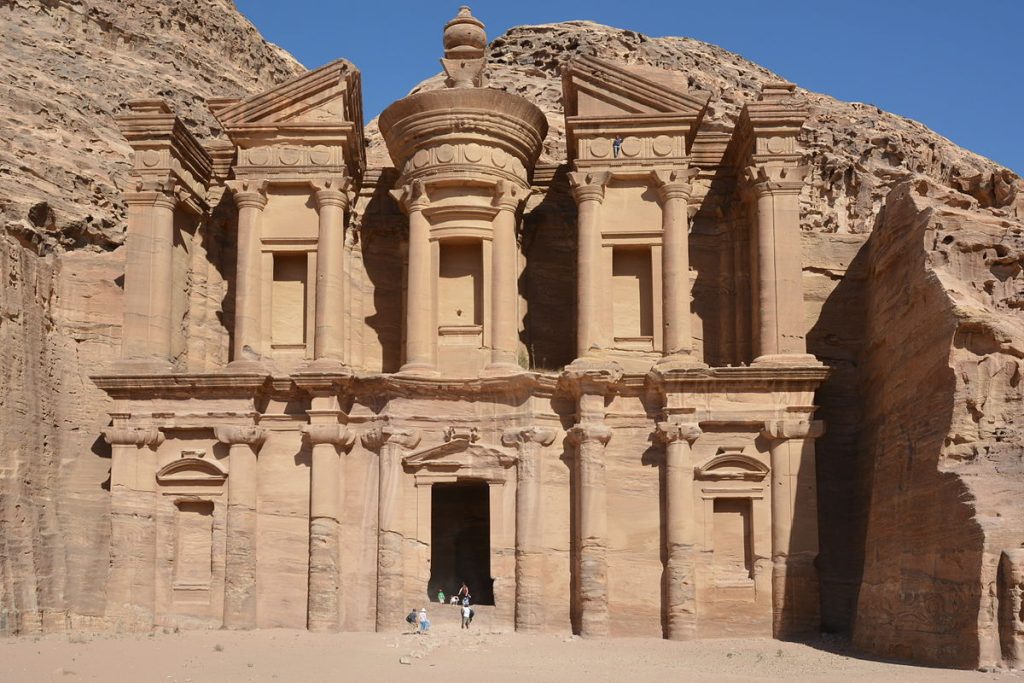
Jordan is a treasure trove of history, culture, and natural wonders, making it one of the most captivating tourist destinations in the Middle East. Known as the land of ancient civilizations, Jordan offers an extraordinary blend of archaeological marvels, stunning landscapes, and vibrant cultural experiences that attract millions of visitors each year. One of its most famous attractions is Petra, the ancient Nabatean city carved into rose-red cliffs, often referred to as the “Lost City” and one of the New Seven Wonders of the World. Walking through the Siq, a narrow gorge leading to the breathtaking Al-Khazneh (The Treasury), is an unforgettable experience that transports travelers back in time. Beyond Petra, Jordan’s Wadi Rum, also known as the Valley of the Moon, offers an otherworldly desert landscape filled with towering sandstone mountains, vast red dunes, and dramatic rock formations. This UNESCO-listed desert has served as a backdrop for numerous Hollywood films, including Lawrence of Arabia and The Martian, making it a must-visit for adventure seekers who can explore it via jeep tours, camel treks, or even hot air balloon rides.
For those seeking relaxation and wellness, the Dead Sea, the lowest point on Earth, provides an unparalleled experience. The high salinity of its waters allows visitors to float effortlessly while benefiting from its mineral-rich mud, known for its therapeutic properties. Nearby, the Ma’in Hot Springs offer a serene retreat with natural waterfalls and warm thermal pools, perfect for unwinding. Another hidden gem is Aqaba, Jordan’s only coastal city, which boasts stunning beaches, luxury resorts, and a vibrant marine ecosystem in the Red Sea, making it a paradise for snorkeling and scuba diving enthusiasts.
Jordan is also deeply rooted in religious history, attracting spiritual travelers to sites like Mount Nebo, where Moses is believed to have seen the Promised Land before his passing, and Bethany Beyond the Jordan, the recognized site of Jesus’ baptism. Meanwhile, the bustling capital, Amman, provides a modern contrast to the country’s ancient sites, with its lively markets, contemporary art galleries, and delicious Jordanian cuisine, including the iconic Mansaf, the national dish made of lamb, yogurt sauce, and rice. The city’s Roman Theater, Citadel, and Rainbow Street are must-visit spots that showcase Amman’s diverse and dynamic character.
One of Jordan’s greatest assets is its warm hospitality, as locals take immense pride in welcoming visitors with open arms. The country is known for its safe and traveler-friendly atmosphere, making it an ideal destination for solo adventurers, families, and history lovers alike. Whether exploring its rich heritage, engaging in thrilling desert adventures, or indulging in its wellness retreats, Jordan offers an unparalleled journey filled with unforgettable moments, making it a true bucket-list destination for any traveler.
Visit the “Lost City” of Petra

Visiting Petra, the legendary “Lost City”, is an experience that transports travelers to one of the world’s greatest archaeological and historical wonders. Hidden deep within the rugged desert canyons of southern Jordan, Petra is an ancient city carved entirely into rose-colored sandstone cliffs, earning it the nickname “The Rose City.” This breathtaking UNESCO World Heritage Site was once the thriving capital of the Nabatean Kingdom, a powerful civilization that flourished over 2,000 years ago, dominating trade routes across the Arabian Peninsula. Today, Petra stands as one of the New Seven Wonders of the World, drawing countless visitors eager to marvel at its grand architecture, intricate rock-cut tombs, and mysterious past. The journey into Petra begins with a mesmerizing walk through the Siq, a narrow, winding gorge flanked by towering cliffs that reach up to 80 meters (262 feet) high. The anticipation builds as sunlight flickers against the stone walls, guiding visitors to the city’s most iconic structure: Al-Khazneh (The Treasury). This magnificent facade, adorned with detailed carvings, is believed to have been a royal tomb and is one of the most photographed landmarks in the world. Beyond the Treasury, Petra unfolds into a vast archaeological wonderland, featuring the Street of Facades, the Royal Tombs, the Great Temple, and the impressive Monastery (Ad-Deir), which requires a challenging 800-step climb but rewards visitors with breathtaking panoramic views of the surrounding mountains. Adventurous travelers can also explore Petra by night, when the ancient city is illuminated by thousands of candles, creating a magical and unforgettable atmosphere. Whether discovering its hidden passageways, learning about its Nabatean heritage, or simply admiring the sheer grandeur of its architecture, Petra is a once-in-a-lifetime destination that leaves every visitor in awe of its timeless beauty and historical significance.
Float in the Dead Sea
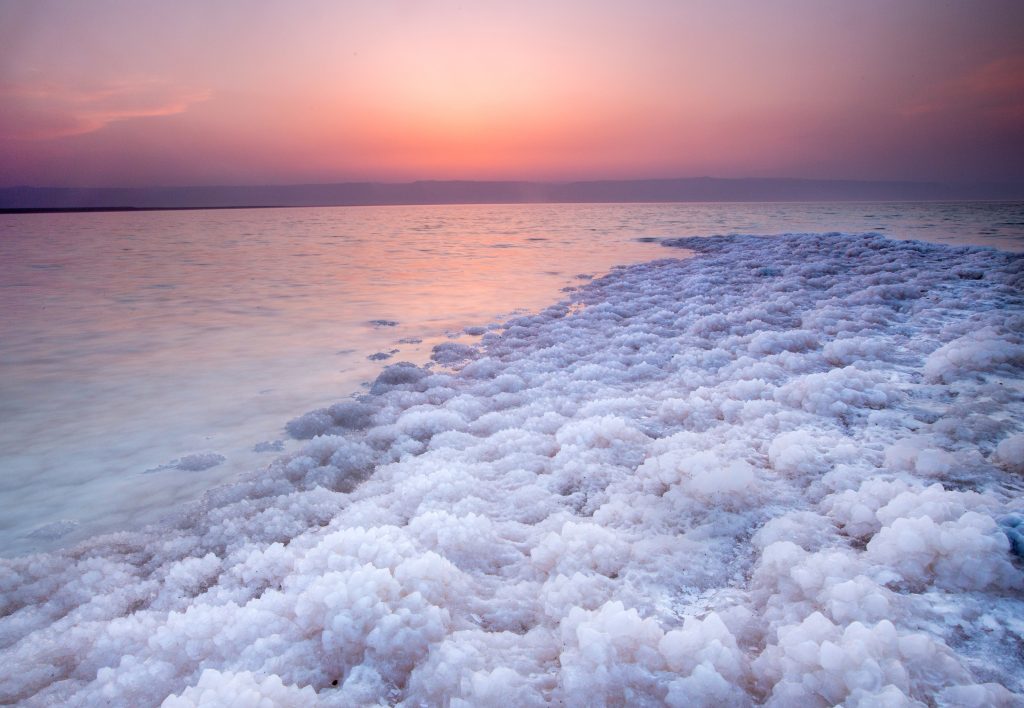
Floating in the Dead Sea is one of the most unique and surreal experiences a traveler can have. Located at the lowest point on Earth, at 430 meters (1,410 feet) below sea level, the Dead Sea is a natural wonder that has fascinated visitors for thousands of years. Its waters are nearly ten times saltier than the ocean, creating a level of buoyancy that allows people to effortlessly float on the surface without sinking. This remarkable phenomenon is caused by the extreme salinity, which is due to the high evaporation rate and the absence of an outlet for water to escape. The Dead Sea is not just a geographical marvel but also a natural spa, rich in minerals like magnesium, calcium, and potassium, which are known for their healing and therapeutic properties. Many visitors take advantage of the famous Dead Sea mud, which is packed with nutrients that nourish and rejuvenate the skin. Covering yourself in this mineral-rich mud before rinsing off in the sea is a must-try ritual that has been practiced since ancient times. Historical records suggest that even Cleopatra and King Herod the Great cherished the Dead Sea for its legendary beauty and health benefits.
Surrounding the Dead Sea is a breathtaking landscape of desert cliffs and dramatic rock formations, making it a perfect place for relaxation and adventure alike. The nearby Ein Gedi Nature Reserve offers lush oases, waterfalls, and hiking trails for those who want to explore the area’s natural beauty. Just a short drive away, the ancient fortress of Masada, a UNESCO World Heritage Site, stands atop a massive plateau, offering a glimpse into Jewish history and stunning sunrise views over the Dead Sea. Visitors can access the fortress via a steep hiking path known as the Snake Path or take a cable car for a more leisurely ascent. Whether you’re floating in the tranquil, mineral-rich waters, enjoying a luxury spa treatment at one of the resorts, or exploring the nearby historical and natural sites, the Dead Sea offers a once-in-a-lifetime experience that blends relaxation, history, and breathtaking scenery.
Go Wild in Wadi Rum

Go Wild in Wadi Rum – The Ultimate Desert Adventure
Wadi Rum, also known as the Valley of the Moon, is a breathtaking desert landscape in southern Jordan, famous for its towering sandstone mountains, dramatic rock formations, and vast red sand dunes. It is one of the most spectacular natural wonders in the world and a UNESCO World Heritage Site, making it a must-visit for adventure lovers, history enthusiasts, and nature seekers alike. Here’s everything you need to know about going wild in Wadi Rum:
Top Things to Do in Wadi Rum
1. Take a Jeep Safari Adventure 🚙
- Explore the vast desert on a thrilling 4×4 jeep tour, the best way to cover large distances and reach remote areas
- Visit famous landmarks such as Lawrence’s Spring, the Burdah Rock Bridge, and the Seven Pillars of Wisdom
- Witness the stunning sunset over the desert, an unforgettable experience
2. Ride a Camel Like a Bedouin 🐪
- Experience the traditional way of traveling in Wadi Rum on a camel trek
- Follow the ancient caravan routes and enjoy the peaceful desert scenery
- Short rides (1-2 hours) or longer journeys (overnight treks) are available
3. Camp Under the Stars in a Bedouin Camp ⛺🌌
- Stay in an authentic Bedouin camp, run by local Bedouin families
- Enjoy a delicious Zarb meal, a traditional Bedouin BBQ cooked underground
- Experience stargazing in one of the world’s best dark-sky locations, with clear views of the Milky Way
4. Try Sandboarding and Dune Bashing 🏂
- Slide down the massive red sand dunes on a sandboard, an exhilarating activity
- Join a dune-bashing tour for an adrenaline-pumping experience in the desert
5. Go Rock Climbing and Hiking 🧗♂️
- Wadi Rum is a paradise for rock climbers, with challenging cliffs and breathtaking views
- Climb famous formations like Jebel Burdah and Jebel Umm Ad Dami, Jordan’s highest peak (1,854m)
- Hike through narrow canyons like Khazali Canyon, where you can see ancient petroglyphs carved into the rock
6. Visit Lawrence of Arabia’s Sites 🏰
- See Lawrence’s Spring, named after T.E. Lawrence (Lawrence of Arabia), who described Wadi Rum in his book Seven Pillars of Wisdom
- Explore the ruins of a Nabatean temple, evidence of the ancient civilizations that once inhabited the area
7. Take a Hot Air Balloon Ride 🎈
- For a once-in-a-lifetime experience, soar above Wadi Rum in a hot air balloon
- Enjoy panoramic views of the desert landscape at sunrise
Explore the Ruins in Jerash
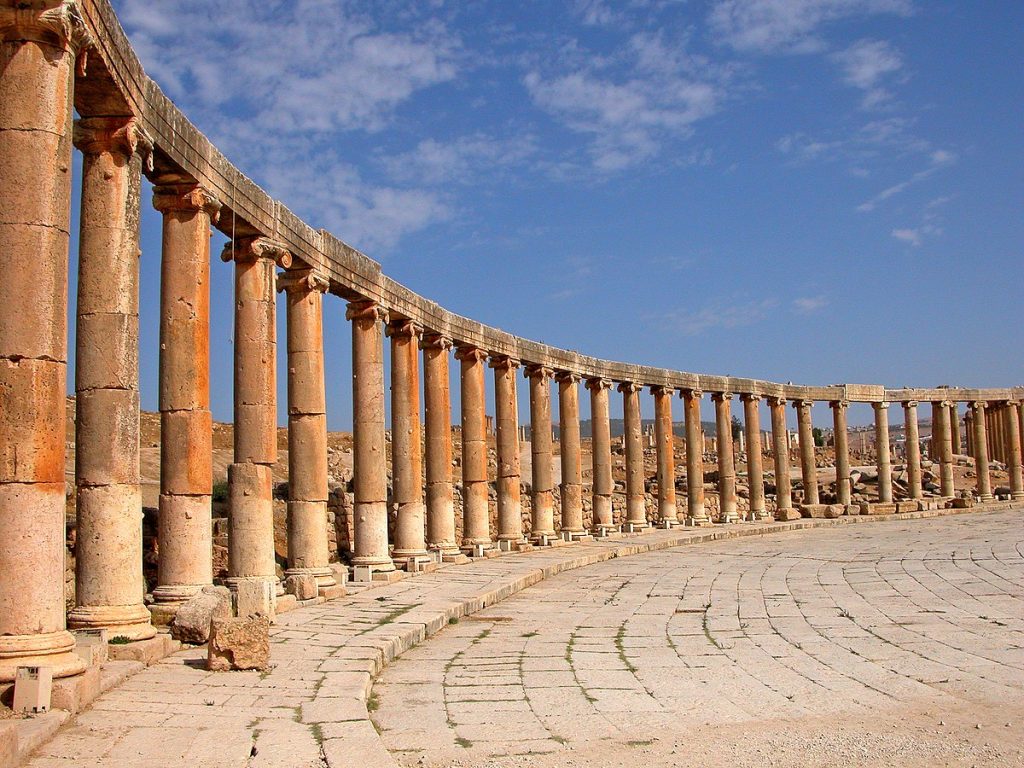
Jerash, known as the “Pompeii of the East,” is one of the best-preserved Roman archaeological sites outside Italy. Located 48 km (30 miles) north of Amman, Jordan, Jerash offers a fascinating glimpse into the grandeur of the Greco-Roman era, with its impressive ruins, monumental architecture, and rich history. Here’s everything you need to know about exploring Jerash’s ancient ruins:
📍 Key Facts About Jerash
- 🏛️ One of the best-preserved Roman cities in the world
- 📍 Location: Northern Jordan, around 45 minutes from Amman
- ⏳ History: Dates back over 6,500 years, but flourished under Roman rule in the 1st century AD
- 🌍 Part of the Decapolis: A group of 10 important Roman cities in the Middle East
- 🎭 Famous for its annual Jerash Festival, which celebrates Jordanian and international culture with music, dance, and performances
🔹 Top Attractions in Jerash
1. Hadrian’s Arch (Triumphal Arch) – The Grand Entrance
- Built in 129 AD to honor Emperor Hadrian’s visit to Jerash
- One of the most iconic landmarks of the site
- Originally much taller, with three massive arches and grand decorations
2. The Oval Plaza (Forum) – A Unique Roman Wonder
- A huge open-air plaza with an oval shape, unlike typical Roman squares
- Surrounded by 56 Ionic columns, creating a dramatic and elegant setting
- Served as a social and political gathering spot in ancient times
3. The Cardo Maximus – The Roman Main Street
- A colonnaded street running through the heart of Jerash
- Originally lined with shops, markets, and fountains
- Features ruts from ancient chariots, showing signs of thousands of years of use
4. The North & South Theaters – Ancient Entertainment Hubs
- The South Theater (built in the 2nd century AD) could seat 3,000 spectators
- The North Theater was used for poetry readings, debates, and performances
- Acoustics are so good that even today, guides demonstrate sound projection from the stage
5. The Temple of Artemis – Dedicated to the Goddess of Hunting
- Built in honor of Artemis, the patron goddess of Jerash
- Features 12 towering Corinthian columns, some still standing today
- Considered the most sacred site in ancient Jerash
6. The Nymphaeum – The City’s Grand Fountain
- A massive ornamental fountain, once adorned with carved lion heads and statues
- Used to supply fresh water to the city’s residents
- A perfect example of Roman engineering and water management
7. The Hippodrome – Ancient Chariot Racing Stadium
- A 244-meter-long Roman stadium used for chariot races and gladiator battles
- Could hold up to 15,000 spectators in its prime
- Today, visitors can watch recreations of Roman army drills and chariot races
Visit the Citadel in Amman
10 Key Points About Visiting the Citadel in Amman
📍 Location & Significance
- The Amman Citadel (Jabal Al-Qala’a) sits on the highest hill in Amman, Jordan, offering panoramic views of the modern city.
- It is one of the oldest continuously inhabited places in the world, with evidence of civilizations dating back over 7,000 years.
🏛️ The Temple of Hercules
- The Temple of Hercules, built during the Roman period (161-166 AD), is the most famous landmark of the Citadel.
- The ruins include two massive stone columns and the remains of a giant Hercules statue, with only parts of its fingers still visible.
🕌 The Umayyad Palace
- A large Islamic-era palace complex, built during the Umayyad Caliphate (8th century AD).
- Features a beautifully restored domed audience hall, which served as a royal reception hall.
🏺 The Jordan Archaeological Museum
- A must-visit museum located inside the Citadel, showcasing artifacts from prehistoric times to the Islamic era.
- Displays the Dead Sea Scrolls, ancient statues, coins, and pottery.
🕍 The Byzantine Church
- Built in the 6th or 7th century AD, this church has well-preserved stone columns and intricate floor mosaics.
- Reflects the importance of Christianity in Jordan before the arrival of Islam.

Learn about the Crusades at Ajloun Castle
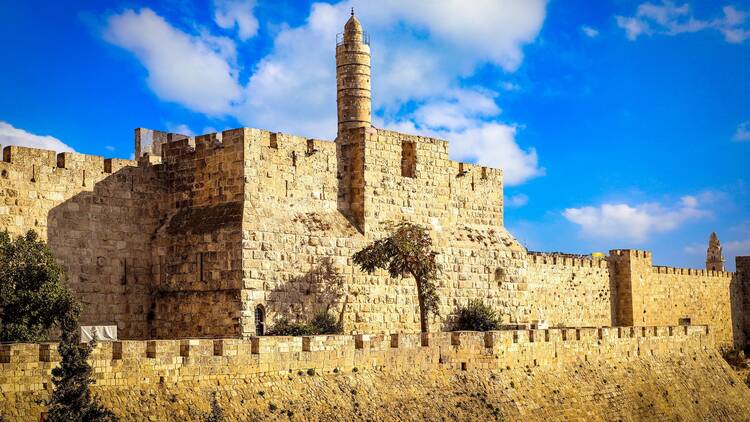
Learn About the Crusades at Ajloun Castle 🏰
Perched atop a hill in northern Jordan, Ajloun Castle (Qala’at Ar-Rabad) is a magnificent 12th-century fortress that played a key role in the Crusades. Built in 1184-1185 AD by Izz al-Din Usama, one of Salah ad-Din’s (Saladin’s) generals, the castle was a strategic military stronghold designed to defend against Crusader invasions and protect trade routes. The castle’s massive stone walls, high towers, secret passageways, and defensive features make it an exceptional site for history lovers eager to learn about the Islamic resistance against the Crusaders. Today, it is one of Jordan’s most well-preserved castles and offers stunning panoramic views of the Jordan Valley and the West Bank.
🔹 Key Facts About Ajloun Castle
✔ Built: 1184-1185 AD by Izz al-Din Usama, under the orders of Saladin
✔ Purpose: To defend the region from Crusaders and protect vital trade routes
✔ Strategic Location: Overlooks Jordan Valley, controlling the path between Syria and Jordan
✔ Architectural Influence: Features classic Islamic military design, including moats, towers, and arrow slits
✔ Destroyed & Rebuilt: Damaged by Mongols (13th century) and earthquakes (19th century) but later restored
✔ Today: One of the best-preserved Crusader-era castles in the Middle East
🔹 Tips for Visiting Ajloun Castle
✔ Best Time to Visit: Spring (March-May) or Fall (September-November) for pleasant weather.
✔ Opening Hours: Usually 8 AM – 6 PM (varies by season).
✔ Wear Comfortable Shoes: The castle has stone steps and uneven terrain.
✔ Bring a Camera: The sunset views from the castle are spectacular! 📸
✔ Hire a Guide: Learn about the history of the Crusades and Islamic defenses from a local expert.
🔹 Why You Should Visit Ajloun Castle 🏰✨
✅ A fascinating historical site that tells the story of Islamic resistance against the Crusaders.
✅ Offers a unique look at medieval Islamic military architecture.
✅ Stunning panoramic views of Jordan’s lush green Ajloun Forest Reserve.
✅ A perfect day trip from Amman (just 1.5 hours away).
✅ One of Jordan’s hidden gems, often overlooked by tourists!
If you love history, castles, and breathtaking landscapes, Ajloun Castle is a must-visit on your trip to Jordan! 🏰✨
View the Promised Land from Mount Nebo
Mount Nebo is one of Jordan’s most sacred and historically significant sites, offering breathtaking panoramic views of the surrounding lands, including the Dead Sea, the Jordan Valley, Jericho, and even Jerusalem on a clear day. Located about 10 km west of Madaba, this biblical site is where, according to tradition, Prophet Moses (peace be upon him) stood and gazed upon the Promised Land before he passed away. Today, it remains a spiritual pilgrimage destination for Jews, Christians, and Muslims alike, as well as a top tourist attraction in Jordan.
🔹 Biblical & Religious Significance of Mount Nebo 📖
- According to the Old Testament (Deuteronomy 34:1-6), God showed Moses the Promised Land from the peak of Mount Nebo.
- Moses is believed to have died and been buried nearby, though the exact location of his grave remains unknown.
- It is an important pilgrimage site for Christians, Jews, and Muslims, as Moses is a revered prophet in all three faiths.
- The site was a major early Christian pilgrimage center, dating back to the 4th century AD.
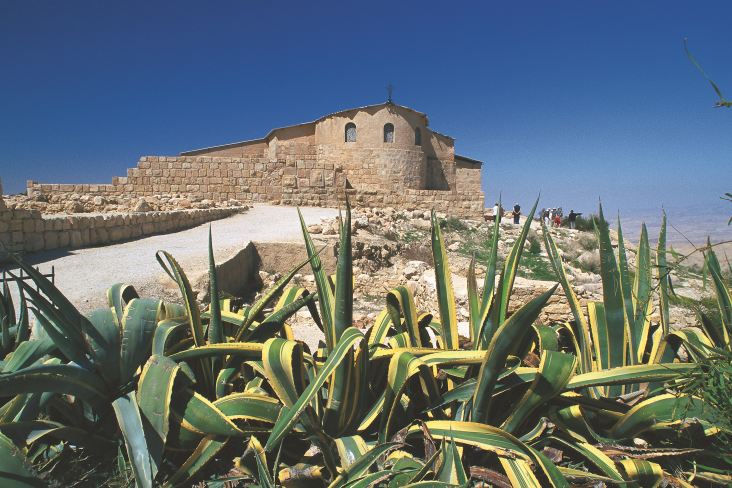
Explore the History of Christianity at the Baptismal Site of Jesus Christ

The Baptismal Site of Jesus Christ, also known as Bethany Beyond the Jordan (Al-Maghtas), is a significant religious and archaeological site located on the eastern bank of the Jordan River in Jordan. Revered as the baptismal site of Jesus, it is believed to be where John the Baptist baptized Jesus Christ, marking one of the most pivotal moments in Christian history. The site holds great religious, historical, and archaeological significance, attracting Christian pilgrims and history enthusiasts from all over the world.
🔹 Biblical & Religious Significance of the Site 📖
- According to the New Testament (Matthew 3:13-17, Mark 1:9-11, Luke 3:21-22, John 1:29-34), this is the location where John the Baptist baptized Jesus, beginning his public ministry.
- The baptism of Jesus in the Jordan River is a key moment in Christian theology, symbolizing the beginning of Jesus’ mission and the affirmation of his divine identity.
- John the Baptist is believed to have preached repentance and baptized those who sought purification, calling them to prepare for the coming of the Messiah.
- The site is recognized by both Christians and Muslims as an important place of spiritual significance.
